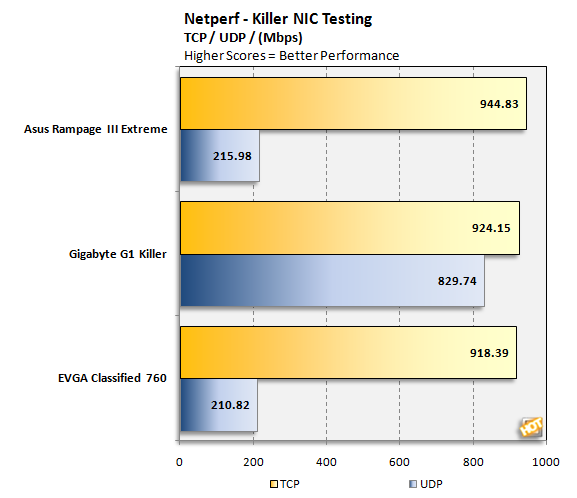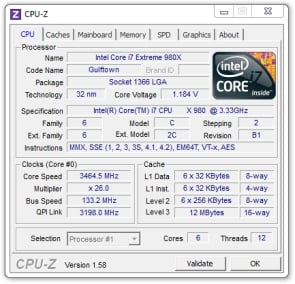Gigabyte G1.Assassin X58 Motherboard Review
Test System and KIller E2100 Testing
How we configured our test systems: Before testing, we visited the motherboard's support page to download the latest BIOS that's publicly available. Then we flashed the BIOS to the latest revision and moved to the next step. When configuring our test systems for this article, we set each board to its optimized defaults. After saving the settings, we re-entered the BIOS and manually set the memory for DDR3-1600 with 9-9-9-24 timings. The hard drive was formatted, and Windows 7 Pro 64bit installed. Once the Win 7 installation completed, we updated the OS and installed the drivers necessary for our components. Auto-Updating and Windows Defender were then disabled and we installed all of our benchmarking software, and ran the tests.
|
|
Motherboards:
EVGA Classified X58 760 Asus Rampage III Extreme
Processor: |
RAM: Graphics Card: |
In order to find out where the G1 Assassin stood in comparison to other high end boards, we tested it along with the Classified X58 motherboard from EVGA, and with the Rampage III Extreme from Asus. We used a single Asus DirectCU II GTX 580 during all of the tests.
Just like any article comparing boards of the same chipset, we expect the scores to be very close, provided everything is working correctly. For most users, the biggest difference between these boards will come in the form of looks, connectivity options, BIOS settings, and accessory bundle.
|
|
|
|
Netperf is a suite of applications designed to test network performance across a wide variety of parameters. It is primarily a throughput test designed to measure how much traffic can flow through a piece of networking hardware in a given period of time. We used the application, along with batch files, in order to specifically test the performance of the Bigfoot Networks Killer E2100 chip. |

The most important information to take away from the graph above is the throughput advantage shown by the Killer E2100. While TCP results are similar across the board, UDP, or User Datagram Protocol scores are lopsidedly in favor of the G1 Assassin, thanks to Bigfoot Network's chip.








